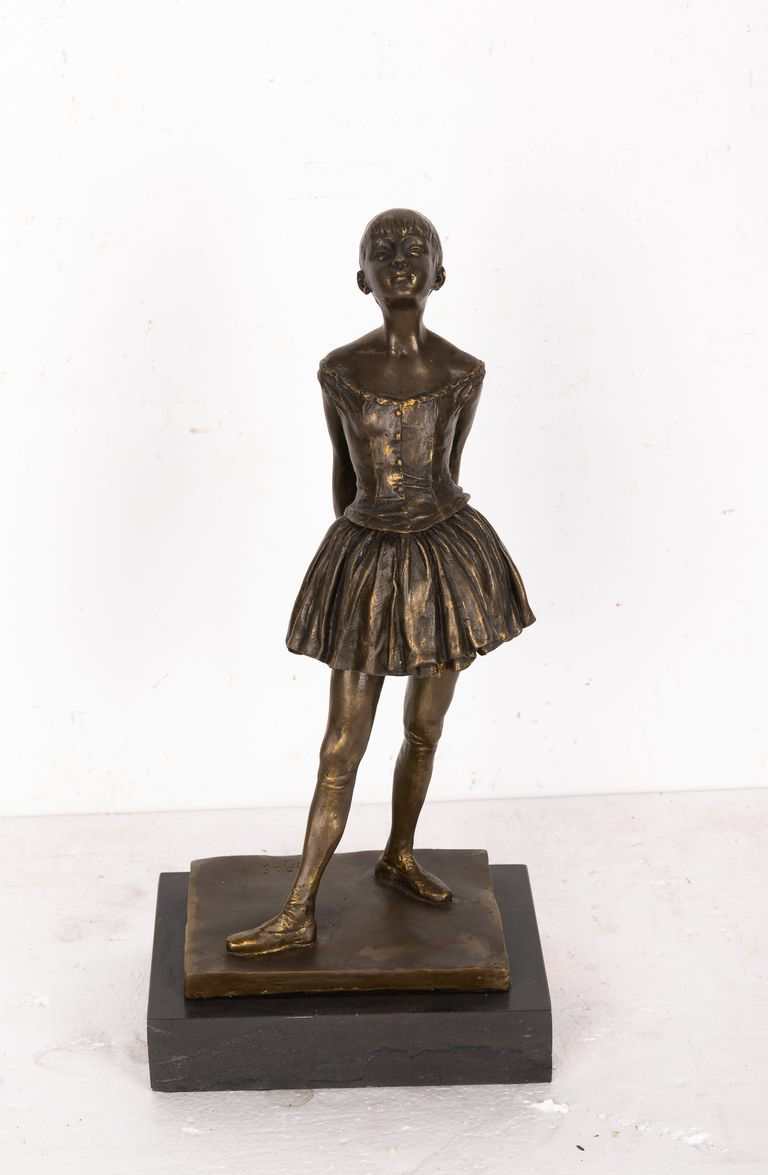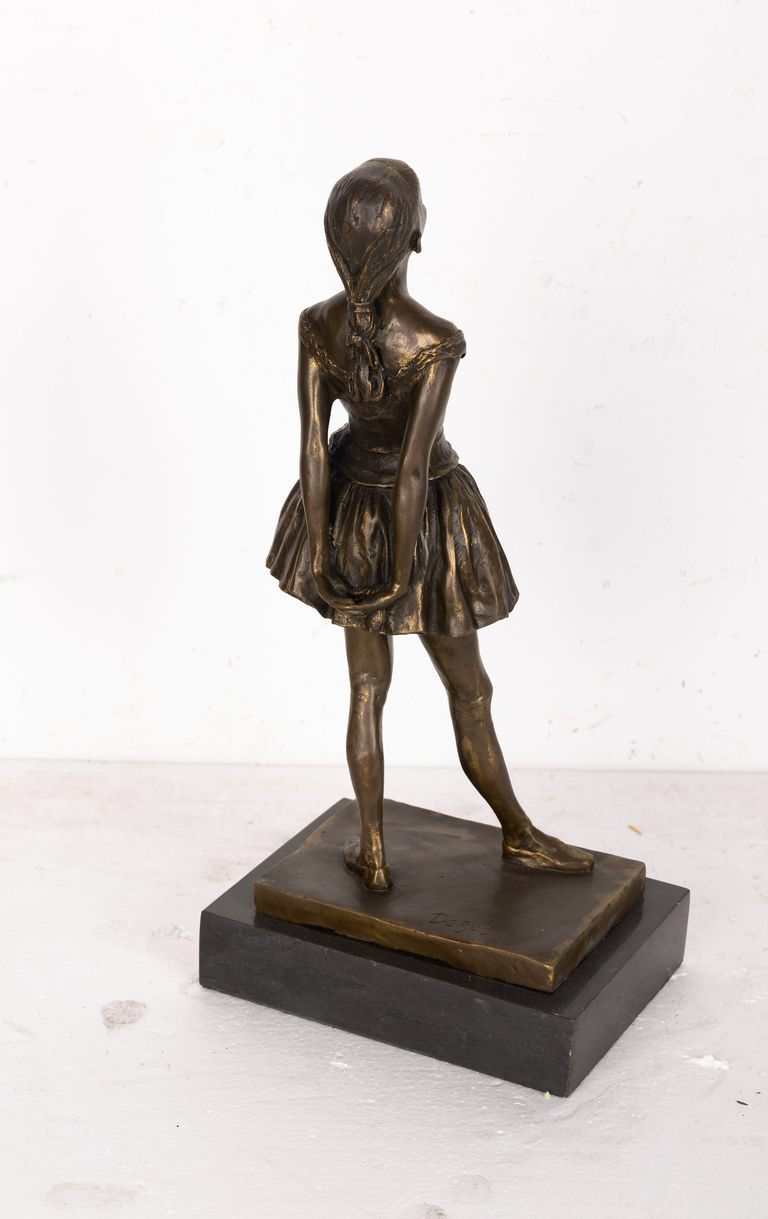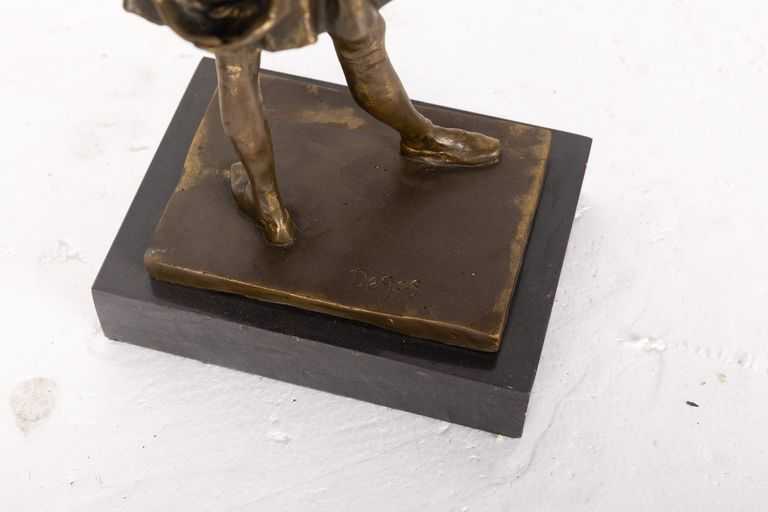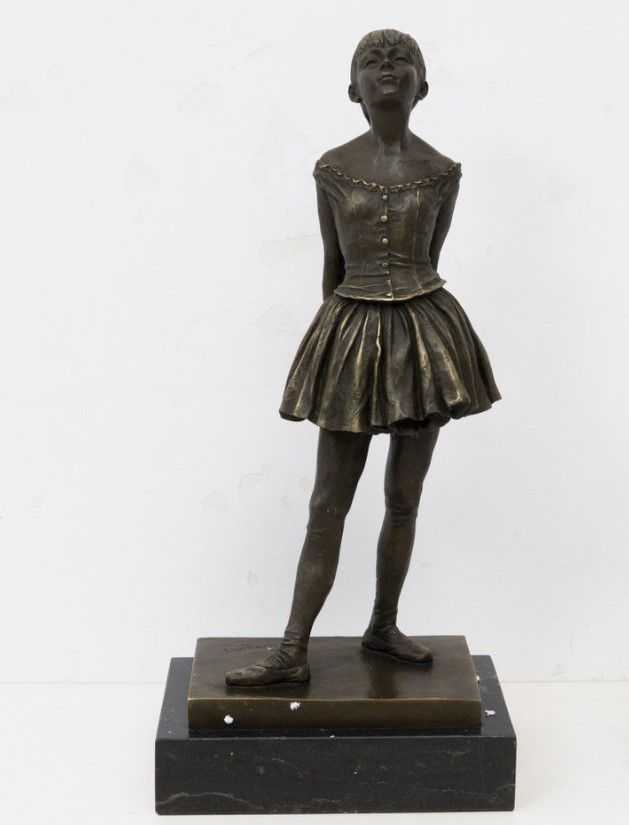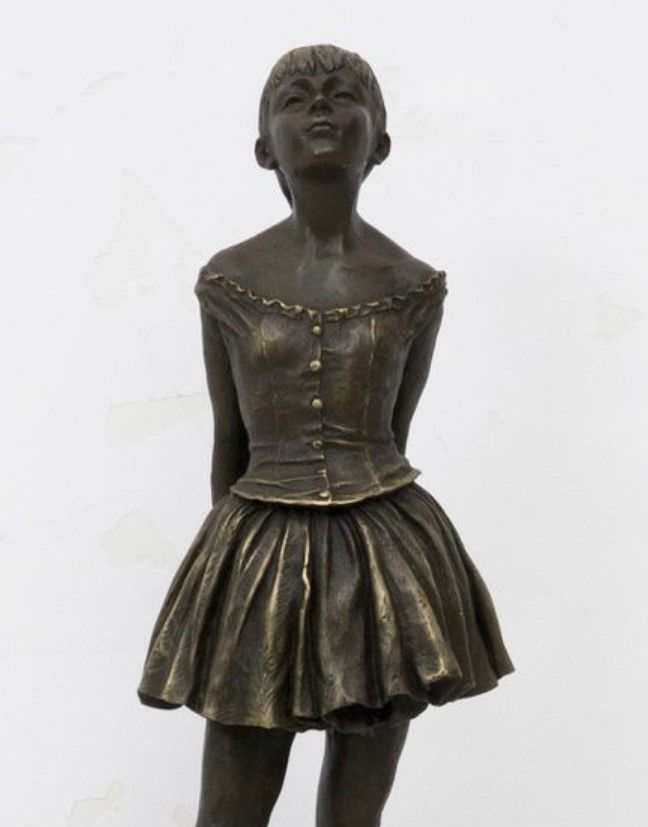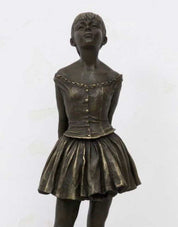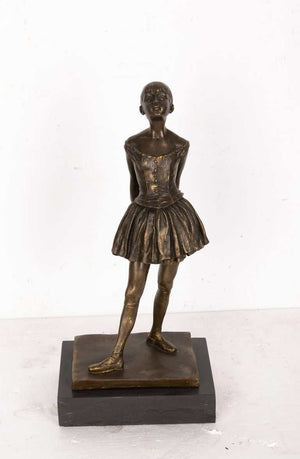Similar Items
Edgar Degas (After ) Petite danseuse de 14 ans
$3,000.00 USD
After Edgar Degas: "Petite danseuse de 14 ans"
Capturing the grace and elegance of a young ballet dancer, 'Petite danseuse de 14 ans' is a reproduction of Edgar Degas' iconic sculpture. This work not only pays homage to Degas' mastery but also reflects the artist's groundbreaking approach to sculpture, which blurred the lines between reality and idealized representation.
Details:
Artist: After Edgar Degas
Title: Petite danseuse de 14 ans
Dimensions: 36 x 18 x 13 cm
Description:
'Petite danseuse de 14 ans,' or "The Little Dancer of Fourteen," stands as one of Edgar Degas' most celebrated masterpieces. This reproduction vividly captures the essence of the original sculpture, which portrayed Marie van Goethem, a newly recruited dancer of the Paris Opera Ballet. Degas' representation of this young dancer's form and movement caused a sensation at the Impressionist Exhibition in Paris in 1881, challenging traditional notions of sculpture and sparking public intrigue.
Marie is frozen in a moment of balletic movement, her body expertly posed. Her hands are crossed behind her back, one foot poised in front of the other, creating a dynamic sense of rhythm and balance. The slight lean of her body and the forward tilt of her chin lend an air of determination and vulnerability to her character. The sculpture seems to capture a fleeting instance, as if Marie is caught mid-dance, standing resolutely against an imaginary wind.
The original wax sculpture, displayed in a glass cabinet, combined different materials to create a lifelike effect. The tight top, fabric dance skirt, real dancing shoes, and even a headband made of real hair blurred the boundaries between art and reality. Degas' ability to elicit wonder and fascination through this fusion of materials challenged artistic conventions of his time.
Degas' innovative approach subverted traditional sculptural norms, causing both public skepticism and intrigue. The artist's fascination with the intersection of reality and idealization is palpable in this sculpture, as he captures the essence of Marie's youthful ambition and the dedication required for ballet.
Condition:
The reproduction is in good condition, capturing the spirit and form of the original sculpture.
About the Artist:
Edgar Degas (1834-1917) was a French painter, graphic artist, and sculptor known for his pivotal role in the Impressionist movement. Born into a wealthy family, Degas initially pursued academic training but later turned to the bustling city life of Paris as his inspiration. He became captivated by scenes of ballet, theatre, circus, racetracks, and cafés, using his art to portray people engaged in their practiced movements.
Degas' fascination with movement, everyday life, and the human form led him to experiment with different mediums, including pastels, which became his favorite. His work often featured displaced figure groupings and unconventional perspectives, reminiscent of snapshots. Notably, he created wax figures that were cast in bronze after his death, expanding his exploration of form and material.
A pioneer among the Impressionists, Degas' contributions to the art world continue to influence and inspire artists to this day.
Capturing the grace and elegance of a young ballet dancer, 'Petite danseuse de 14 ans' is a reproduction of Edgar Degas' iconic sculpture. This work not only pays homage to Degas' mastery but also reflects the artist's groundbreaking approach to sculpture, which blurred the lines between reality and idealized representation.
Details:
Artist: After Edgar Degas
Title: Petite danseuse de 14 ans
Dimensions: 36 x 18 x 13 cm
Description:
'Petite danseuse de 14 ans,' or "The Little Dancer of Fourteen," stands as one of Edgar Degas' most celebrated masterpieces. This reproduction vividly captures the essence of the original sculpture, which portrayed Marie van Goethem, a newly recruited dancer of the Paris Opera Ballet. Degas' representation of this young dancer's form and movement caused a sensation at the Impressionist Exhibition in Paris in 1881, challenging traditional notions of sculpture and sparking public intrigue.
Marie is frozen in a moment of balletic movement, her body expertly posed. Her hands are crossed behind her back, one foot poised in front of the other, creating a dynamic sense of rhythm and balance. The slight lean of her body and the forward tilt of her chin lend an air of determination and vulnerability to her character. The sculpture seems to capture a fleeting instance, as if Marie is caught mid-dance, standing resolutely against an imaginary wind.
The original wax sculpture, displayed in a glass cabinet, combined different materials to create a lifelike effect. The tight top, fabric dance skirt, real dancing shoes, and even a headband made of real hair blurred the boundaries between art and reality. Degas' ability to elicit wonder and fascination through this fusion of materials challenged artistic conventions of his time.
Degas' innovative approach subverted traditional sculptural norms, causing both public skepticism and intrigue. The artist's fascination with the intersection of reality and idealization is palpable in this sculpture, as he captures the essence of Marie's youthful ambition and the dedication required for ballet.
Condition:
The reproduction is in good condition, capturing the spirit and form of the original sculpture.
About the Artist:
Edgar Degas (1834-1917) was a French painter, graphic artist, and sculptor known for his pivotal role in the Impressionist movement. Born into a wealthy family, Degas initially pursued academic training but later turned to the bustling city life of Paris as his inspiration. He became captivated by scenes of ballet, theatre, circus, racetracks, and cafés, using his art to portray people engaged in their practiced movements.
Degas' fascination with movement, everyday life, and the human form led him to experiment with different mediums, including pastels, which became his favorite. His work often featured displaced figure groupings and unconventional perspectives, reminiscent of snapshots. Notably, he created wax figures that were cast in bronze after his death, expanding his exploration of form and material.
A pioneer among the Impressionists, Degas' contributions to the art world continue to influence and inspire artists to this day.
Popular Items
































